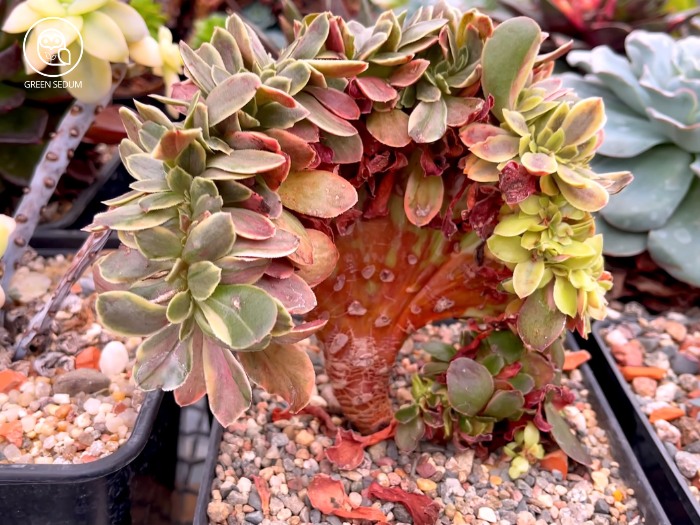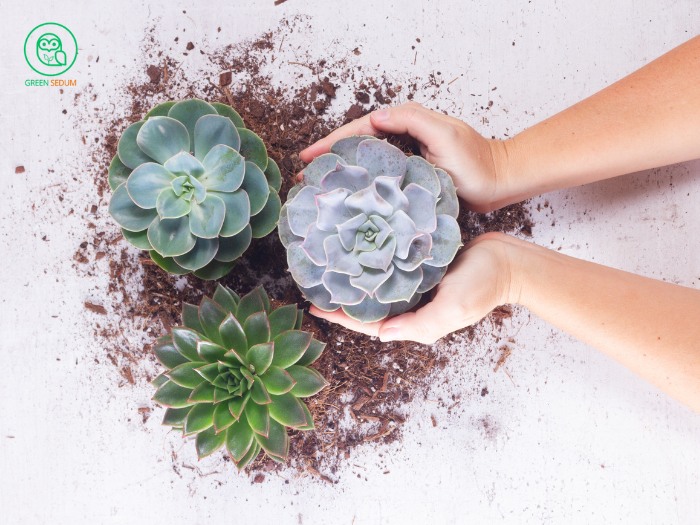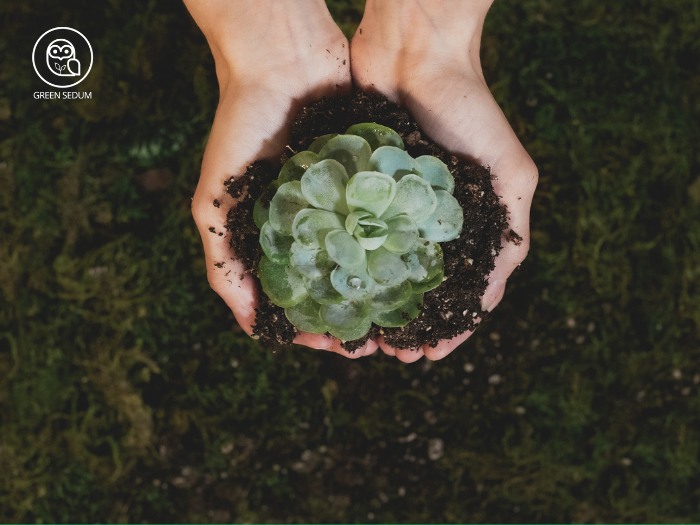Crested succulents are among the most unique and captivating additions you can make to your plant collection. Their distinctive shape and striking beauty draw attention from plant enthusiasts everywhere. To help you better understand these intriguing plants, Green Sedum will explore popular crested succulent varieties and share effective care tips to maintain their health and beauty at their best
1. What is a Crested Succulent?
1.1. Definition and Characteristics
Crested succulents, also known as crested succulents, are a striking type of succulent renowned for their unique growth pattern. Unlike typical succulents, crested succulents develop with a broad, flat shape, resembling a disc or lattice, rather than producing multiple branches or leaves.
This transformation results from a genetic mutation that causes the plant to grow with a flat surface and tightly packed leaves along the top of this growth. Crested succulents often display captivating and diverse colors and shapes, making them a favorite among gardeners.
1.2. Differences from Other Succulent Varieties
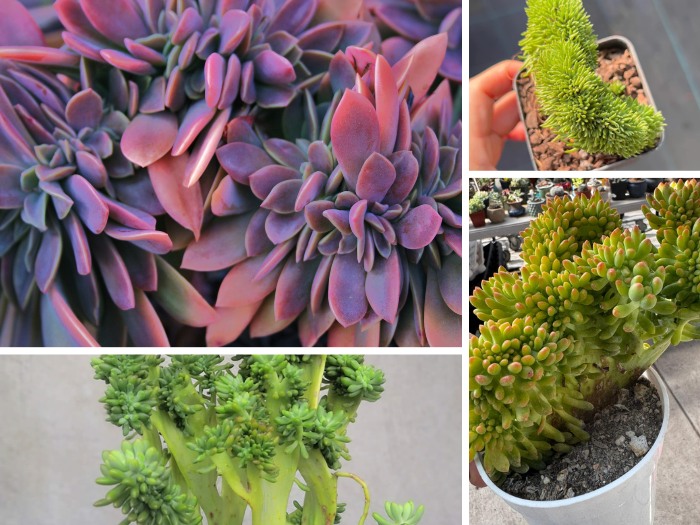
Compared to non-crested succulents, crested succulents exhibit distinctive features. Traditional succulents generally grow in branching or spreading forms, with leaves emerging from various stems and an evenly distributed canopy.
In contrast, crested succulents tend to develop a wide, flat surface, with leaves clustered at the top of the plant. This unique growth pattern not only makes them stand out in any garden but also turns them into intriguing subjects for those interested in rare plant mutations.
Crested succulents are typically rarer than their non-crested counterparts due to the natural occurrence of this mutation, which cannot be artificially created. This rarity makes them a precious addition to succulent collections and contributes to the biodiversity of plant enthusiasts’ gardens.
2. Popular Crested Succulent Varieties
Aeonium Crested
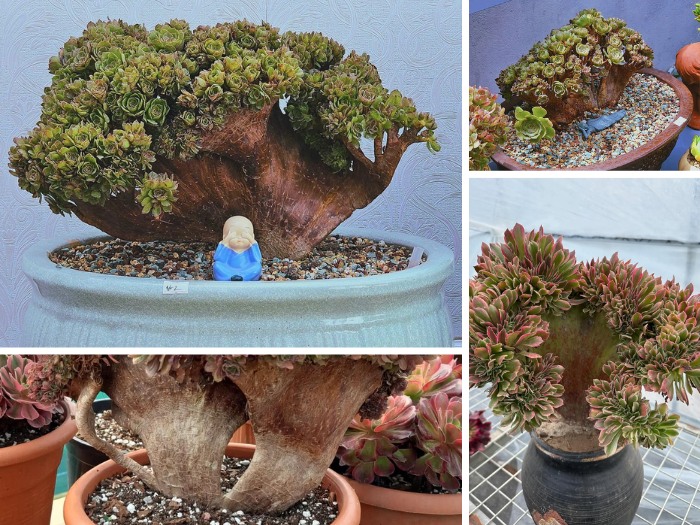
Aeonium crested is a standout among crested succulents, known for its unique, wide, disc-like shape. This plant features overlapping, thick leaves that form a flat, expansive surface, making it an eye-catching addition to any collection.
Aeonium crested is not only visually striking but also easy to care for, making it ideal for both beginners and seasoned enthusiasts. Notably, varieties like Aeonium ‘Zwartkop’ offer a stunning color blend of deep green and purple, adding a vibrant touch to your plant display.
Echeveria Crested
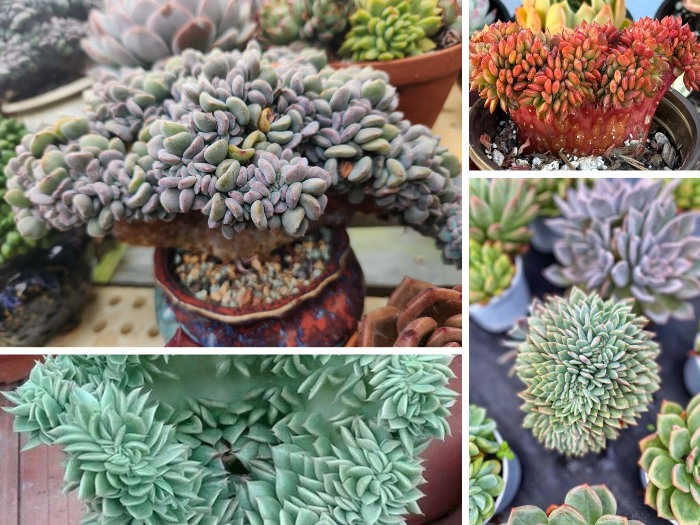
Echeveria crested is another popular choice in the world of crested succulents. It is characterized by its cone-shaped or rosette-like leaves that create a broad, flat surface. This variety often showcases colors ranging from light green to pink and red, enhancing the visual appeal of any plant arrangement.
Echeveria crested thrives in dry conditions, making it adaptable to various care environments and an excellent addition for those looking to introduce color and charm into their space.
Sedum Crested
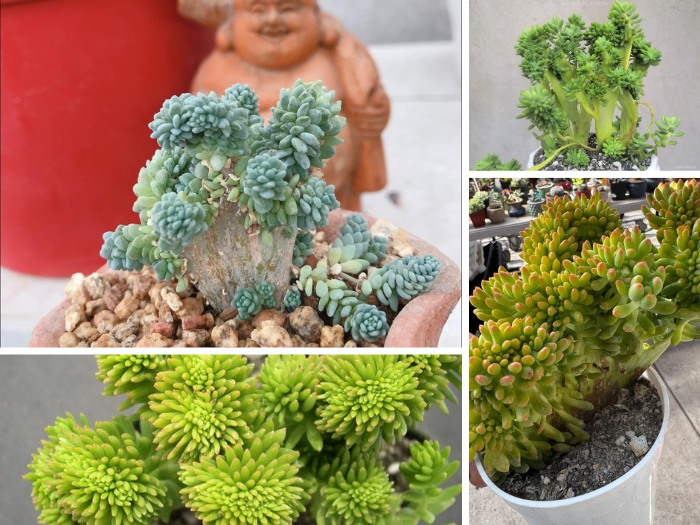
Sedum crested is distinguished by its expansive, flat growth pattern and unique leaf formation. This succulent typically features thick, fleshy leaves stacked together to form a dense mat or layer.
Sedum crested is highly drought-tolerant and thrives in low to medium light conditions, making it a perfect choice for those with limited time for plant care. With its diverse varieties and colors, Sedum crested can elevate any setting, from small pots to large succulent gardens.
These popular crested succulents offer not only a variety of shapes and colors but also ease of care, making them perfect additions to any plant collection.
3. FAQ About Crested Succulents
Do Crested Succulents Require Special Care?
Crested succulents don’t require extensive care but need specific conditions to thrive. They prefer bright, indirect light since too much direct sunlight can scorch their leaves. They need well-draining soil, as they are sensitive to waterlogging. Watering should be adjusted to keep the soil dry between waterings to prevent root rot. Light feeding during the growing season can also support healthy growth.
Can Crested Succulents Thrive in High Humidity?
Crested succulents are not suited for high humidity conditions. They perform best in dry, low-humidity environments. High humidity can lead to issues such as mold, root rot, and other diseases. If you live in a humid area, ensure your plant is in a pot with drainage holes and avoid overwatering. Placing the plant in a well-ventilated area can also help reduce humidity around it.
How Can I Tell if My Crested Succulent is Having Problems?
Signs that a crested succulent is struggling include yellowing, wilting, or brown spots on the leaves, often indicating overwatering or poor drainage. Mold or white powder on the leaves can signal excessive humidity. Root rot may occur if the soil does not drain properly. To address these issues, adjust your watering practices and ensure the soil remains well-drained.
Are Crested Succulents Rare?
Crested succulents are not extremely rare, but they are less common than standard succulents. Their uniqueness lies in their distinctive crested features, which are not found in every plant. While they might not be as readily available as more common varieties, they can be found at specialty plant shops or through online nurseries. Their rarity and unique appearance make them a valuable addition to any plant collection.
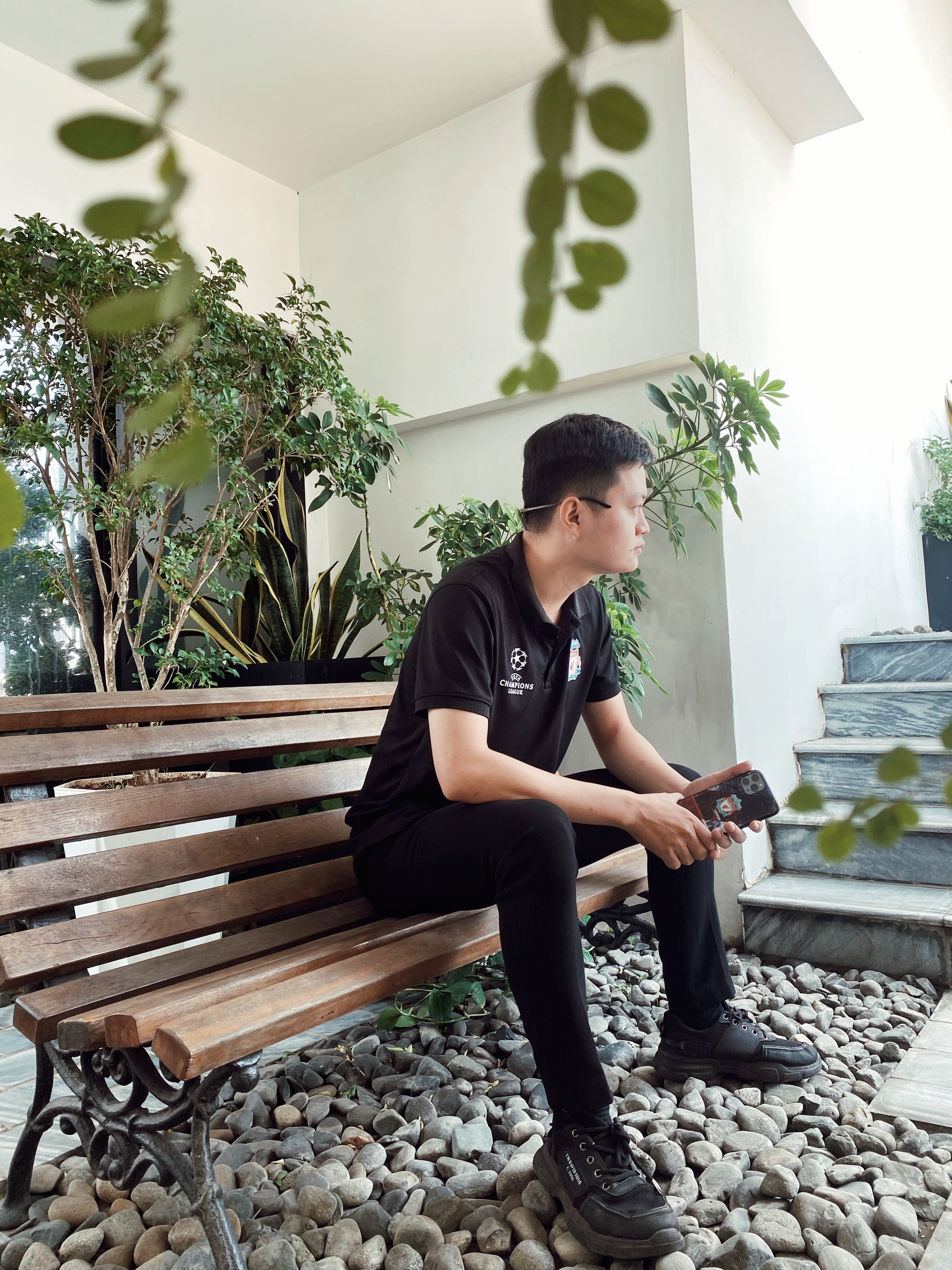
I’m Will Bernan, a gardening enthusiast with over 9 years of experience in succulents, indoor plants, and sustainable living. I also manage SEO for eco-friendly textile brands, promoting fabrics like bamboo and organic cotton.

